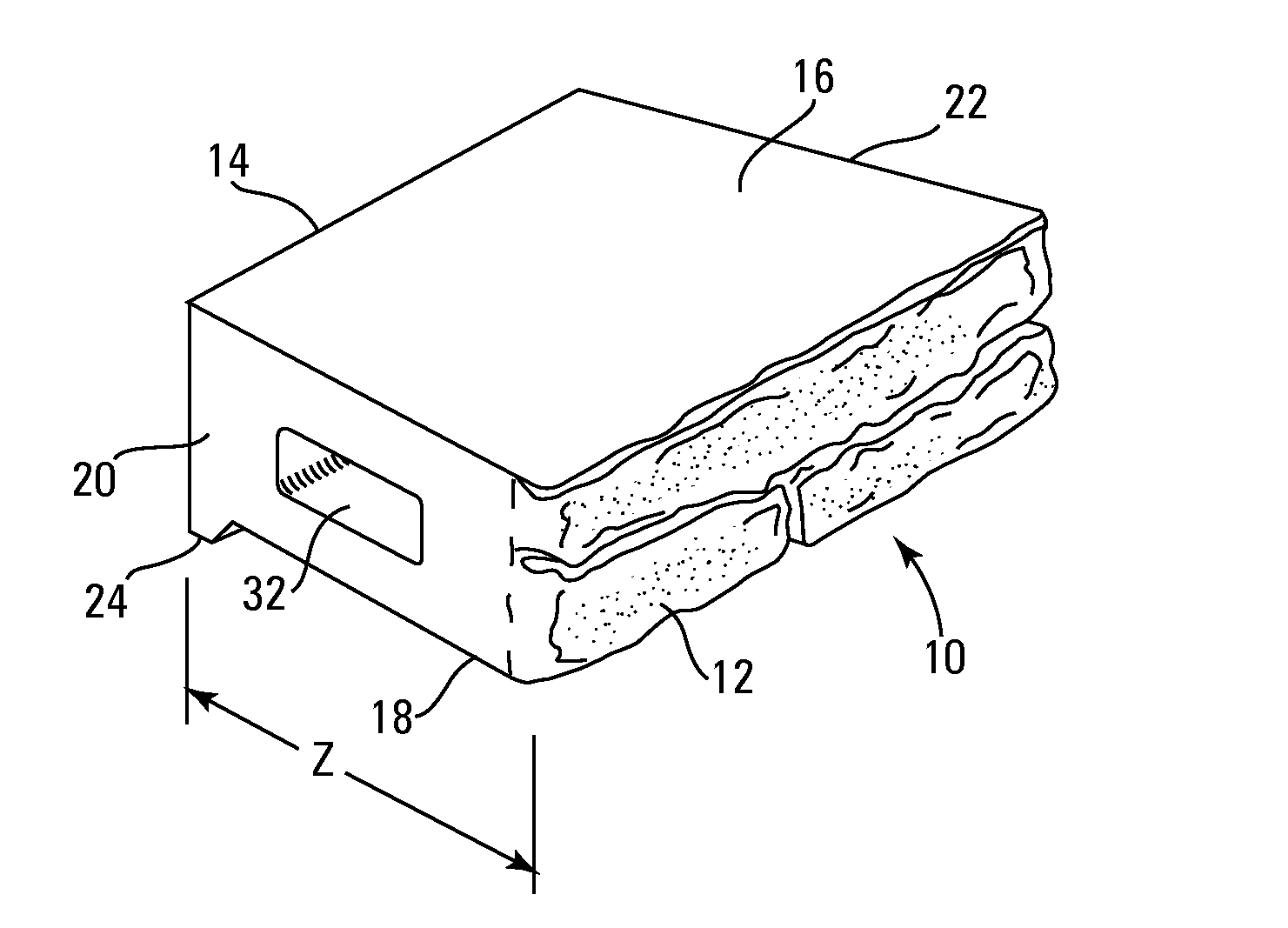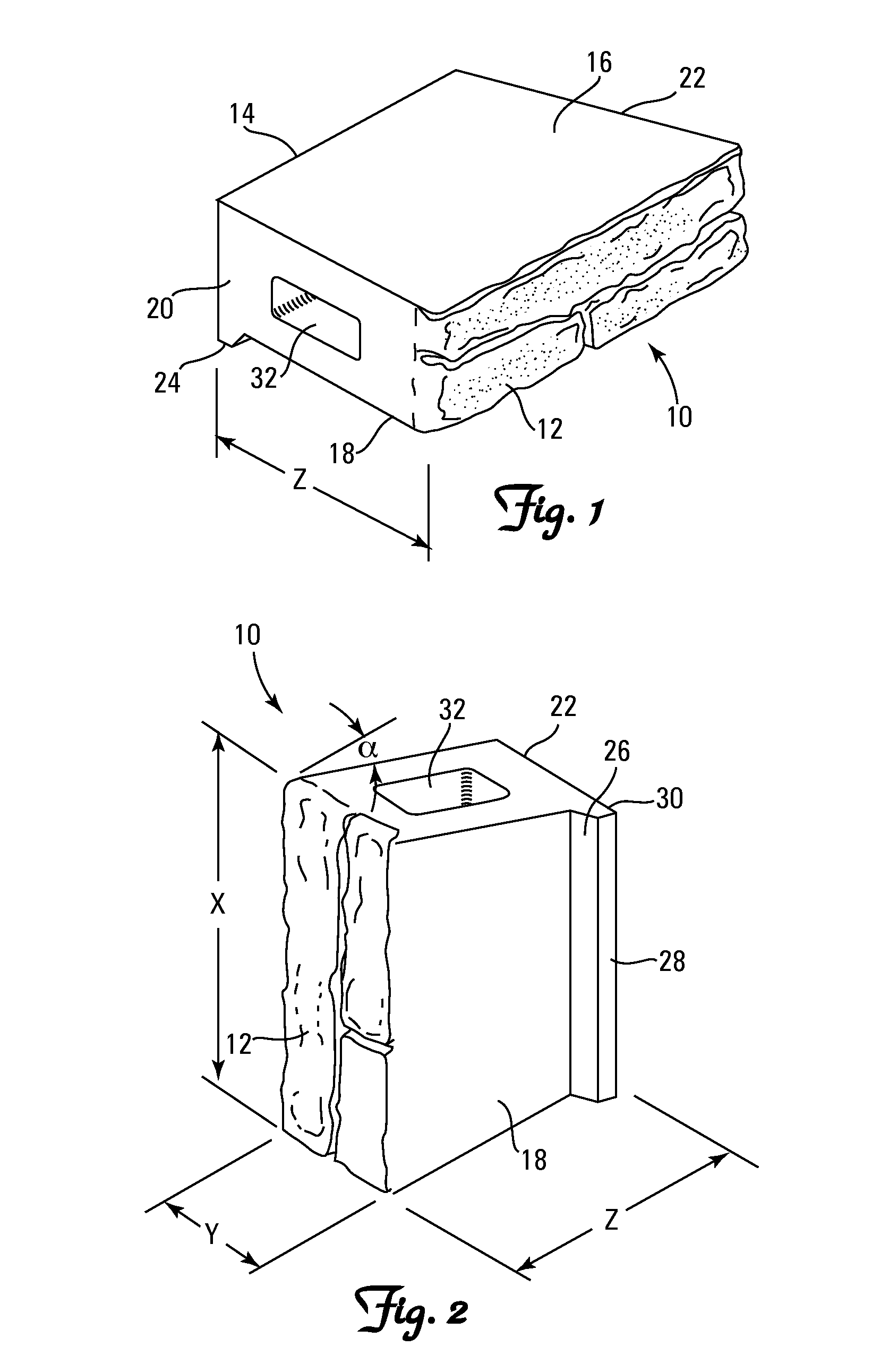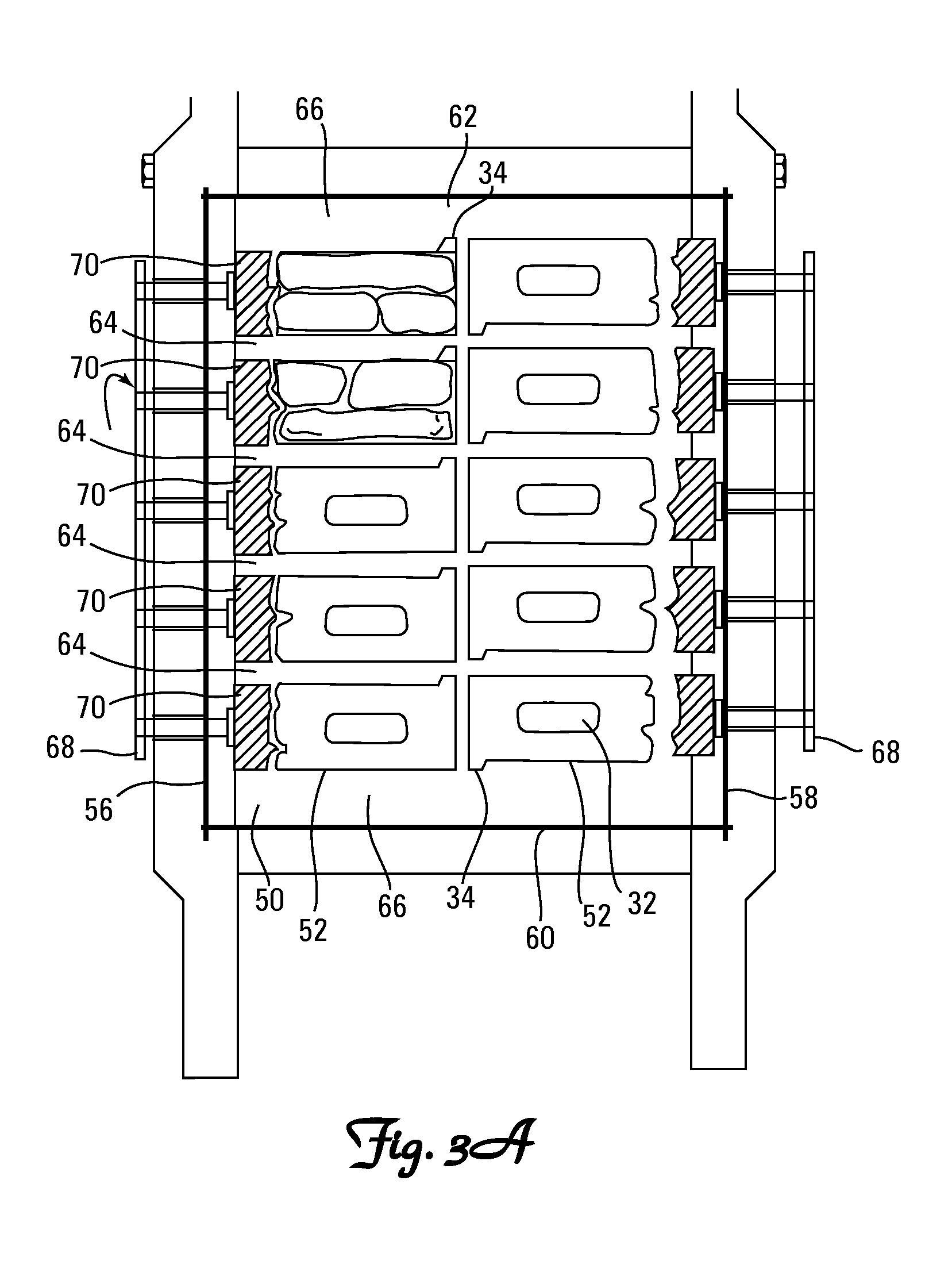Retaining wall block
a technology for retaining walls and blocks, applied in the field of retaining wall blocks, can solve the problems of limiting the number of blocks which can be formed on the pallet, molds to work improperly, and production pallets occupy considerable spa
- Summary
- Abstract
- Description
- Claims
- Application Information
AI Technical Summary
Problems solved by technology
Method used
Image
Examples
Embodiment Construction
[0029]A retaining wall block 10 according to the present invention is shown in perspective in FIGS. 1 and 2. Block 10 comprises a block body defined by opposed front and rear faces 12 and 14, respectively. The front and rear faces are substantially parallel and are separated by a distance Z which comprises the depth of the block. The depth of the block is determined by the size of the mold in which the block is formed as will be described in more detail hereafter. Typically, the depth will be in the range of about 5 to 9 inches. The block body includes opposed top and bottom surfaces 16 and 18, respectively. The top and bottom surfaces are substantially parallel and separated by a distance Y which comprises the thickness or height of the block. The block thickness is determined by the size of the mold and for a typical block may be 4 inches. The block body includes opposed first and second side surfaces 20 and 22, respectively. The first and second side surfaces are not parallel to ...
PUM
| Property | Measurement | Unit |
|---|---|---|
| angle | aaaaa | aaaaa |
| angle | aaaaa | aaaaa |
| depth | aaaaa | aaaaa |
Abstract
Description
Claims
Application Information
 Login to View More
Login to View More - R&D
- Intellectual Property
- Life Sciences
- Materials
- Tech Scout
- Unparalleled Data Quality
- Higher Quality Content
- 60% Fewer Hallucinations
Browse by: Latest US Patents, China's latest patents, Technical Efficacy Thesaurus, Application Domain, Technology Topic, Popular Technical Reports.
© 2025 PatSnap. All rights reserved.Legal|Privacy policy|Modern Slavery Act Transparency Statement|Sitemap|About US| Contact US: help@patsnap.com



